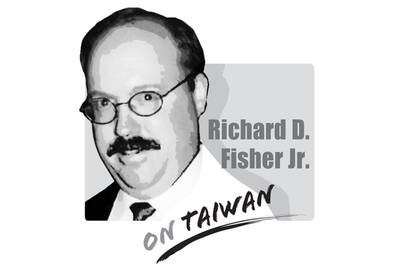Three misstatements
We very much appreciated you publishing an article about our research (“New iron-based superconductor found,” Sept. 13, page 4). The article is quite well written in general. However, some corrections are needed in order to avoid confusion.
First, the statement “Currently, the iron-based compound — dubbed ‘PbO type structure alpha-FeSe’ — can reach superconductive status at a temperature of 30 Kelvin” is not accurate. The FeSe superconductor has a transition temperature of 8K, and under pressure can reach 27K. Thus, it is important to stress that the higher transition temperature to the superconducting state can be achieved only under high pressure.
Second, the statement “Superconductivity is a physical phenomenon in which certain materials, when cooled to very low temperatures such as zero Kelvin” could be misleading. Up to now, it has been very difficult to cool things to exactly zero Kelvin. The lowest attainable temperatures with liquid cryogenic methods are typically in the range of tens of milliKelvin, which is still somewhat larger than zero. Also, as seen with high-tc and iron superconductors, we observe transitions around 8K to 93K, which are larger than zero Kelvin.
Finally, the statement “Meanwhile, a long-existing hypothesis about superconductors is that only substances that are anti-ferromagnetic in nature can be transformed into superconductors” is misphrased and somewhat incorrect. The hypothesis is that magnetism does not lead to superconductivity. Antiferromagnetism is in fact a form of magnetism that denotes how interacting spins align in an anti-parallel position. The high-tc superconductors are normally antiferromagnetic materials that become superconducting below their transition temperature. But the antiferromagnetism is not necessarily directly responsible for the superconductivity.
Saying that only antiferromagnetic materials can become superconducting is a gross misstatement.
MAW-KUEN WU
Director
Institute of Physics
Academia Sinica
Taipei
Importance or impotence?
Taiwanese sometimes have difficulty pronouncing the English words “importance” and “impotence.” The words might sound similar, but it seems that some can’t even tell them apart by their meanings.
Minister of Transportation and Communications Mao Chi-kuo (毛治國) does not feel like saying sorry to the nation after “only” four bridges collapsed when Typhoon Sinlaku pelted Taiwan. The destruction does not seem to bother the minister: His important position has more important tasks than facing the families of victims and taking responsibility.
Casualties and damage brought by the typhoon are increasing, the stock market is tumbling, tainted Chinese products are entering the market and the sovereignty of the country is being challenged.
President Ma Ying-jeou’s (馬英九) important post also involves dealing with other more important issues, whatever they are. His schedule is hectic and includes dining with Chinese Nationalist Party (KMT) legislators.
What else must happen on this island that would prompt the leaders of this country to reflect on the style of their leadership and make them aware that a sense of “importance” can be destructive? “Importance” leads to a failure to perform — to impotence.
HANNA SHEN
Taipei

On Sept. 3 in Tiananmen Square, the Chinese Communist Party (CCP) and the People’s Liberation Army (PLA) rolled out a parade of new weapons in PLA service that threaten Taiwan — some of that Taiwan is addressing with added and new military investments and some of which it cannot, having to rely on the initiative of allies like the United States. The CCP’s goal of replacing US leadership on the global stage was advanced by the military parade, but also by China hosting in Tianjin an August 31-Sept. 1 summit of the Shanghai Cooperation Organization (SCO), which since 2001 has specialized
In an article published by the Harvard Kennedy School, renowned historian of modern China Rana Mitter used a structured question-and-answer format to deepen the understanding of the relationship between Taiwan and China. Mitter highlights the differences between the repressive and authoritarian People’s Republic of China and the vibrant democracy that exists in Taiwan, saying that Taiwan and China “have had an interconnected relationship that has been both close and contentious at times.” However, his description of the history — before and after 1945 — contains significant flaws. First, he writes that “Taiwan was always broadly regarded by the imperial dynasties of
The Chinese Communist Party (CCP) will stop at nothing to weaken Taiwan’s sovereignty, going as far as to create complete falsehoods. That the People’s Republic of China (PRC) has never ruled Taiwan is an objective fact. To refute this, Beijing has tried to assert “jurisdiction” over Taiwan, pointing to its military exercises around the nation as “proof.” That is an outright lie: If the PRC had jurisdiction over Taiwan, it could simply have issued decrees. Instead, it needs to perform a show of force around the nation to demonstrate its fantasy. Its actions prove the exact opposite of its assertions. A
A large part of the discourse about Taiwan as a sovereign, independent nation has centered on conventions of international law and international agreements between outside powers — such as between the US, UK, Russia, the Republic of China (ROC) and Japan at the end of World War II, and between the US and the People’s Republic of China (PRC) since recognition of the PRC as the sole representative of China at the UN. Internationally, the narrative on the PRC and Taiwan has changed considerably since the days of the first term of former president Chen Shui-bian (陳水扁) of the Democratic